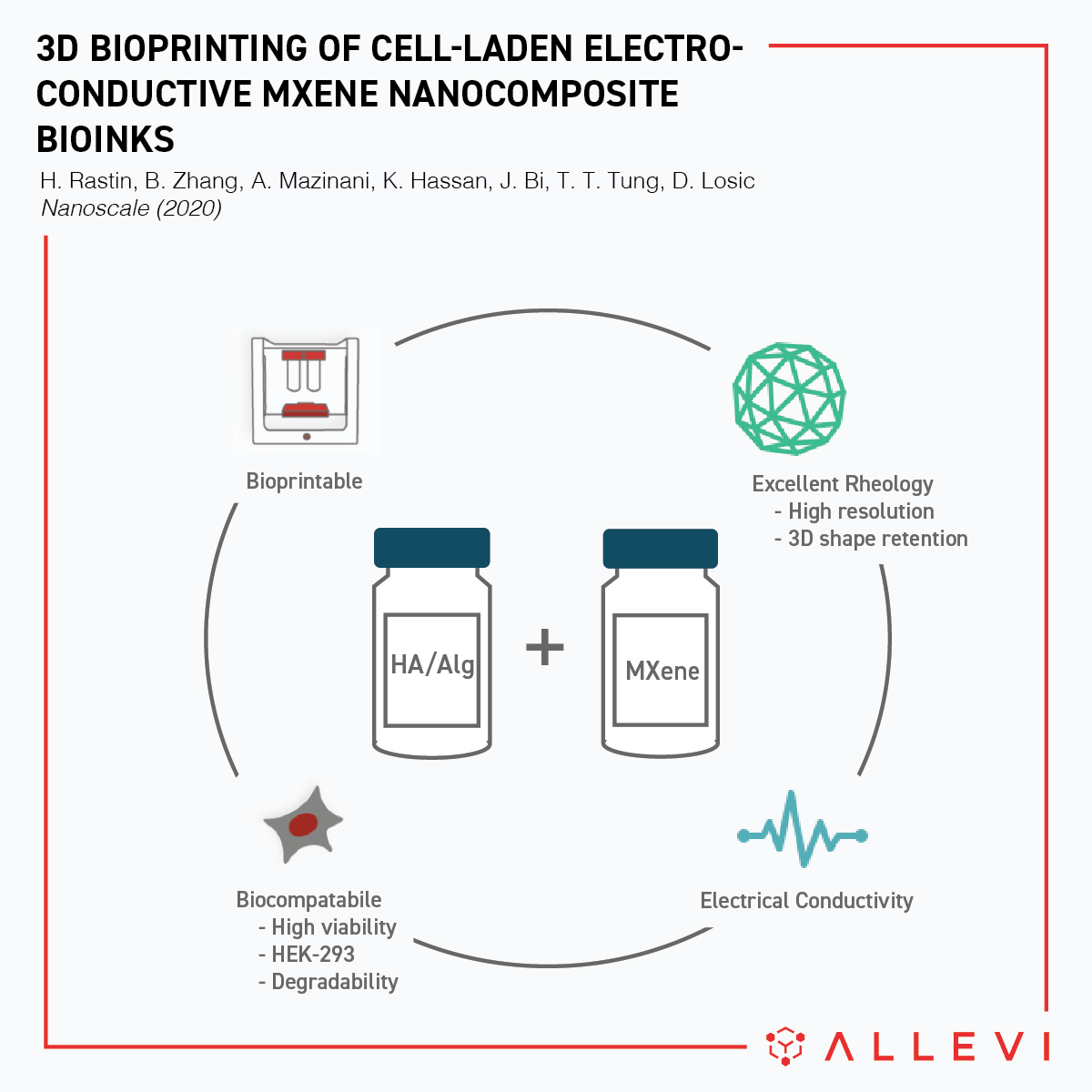
Allevi Blog
Allevi Author develops a new conductive bioink
- Updated on July 8, 2020
Hadi Rastin together with his colleagues from the University of Adelaide in Australia created a new electroconductive bioink that can be combined with cells and easily extruded with excellent results. In a recent Nanoscale publication, the authors describe a combination of titanium-based nanosheets (Ti3C2 MXene) together with hyaluronic acid and alginate.

Tailor-made Biomaterial
Finding a common household material that displayed favorable properties in clinical settings was characteristic of the early days of biomedical engineering. In 1967 an artificial heart was created from the same material found in ladies’ girdles. A few decades later there was a shift towards designing specific materials to match exact needs in tissue engineering, rather than trying to fit the properties of existing products to serve a particular function in a human body.
3D bioprinting also went through a similar lifecycle. In the beginning, simple, unmodified hydrogels were mostly utilized. With time, researchers have tried to fine-tune their properties and engineer new bioinks that can provide much better functionality.
A unique combination
A research publication titled “3D Bioprinting of Cell-Laden Electroconductive MXene Nanocomposite Bioinks” reports a unique combination of different materials – each of them among the best in their respective categories. While hyaluronic acid provides cell attachment and biological stimuli, sodium alginate can complement the mixture with an easy ionic crosslinking mechanism. Together they create a composite material with good printability. After the addition of highly conductive MXene nanosheets, scientists formulated a bioink able to propagate electrical signals, that displayed even better mechanical properties than a pure hydrogel, which is not always the case with other available methods.
MXene two-dimensional nanosheets are special ceramics that were discovered in 2011. Thanks to their great electrical conductivity, low toxicity, and biodegradability they found to be useful in many different fields – from electronics to biomedicine. However, their application was not really explored in tissue engineering before.
Power to the cells
Human embryonic kidney cells upon encapsulation and 3D bioprinting using Allevi 2 bioprinter showed great viability (over 95% of live cells) for a week of cell culture providing evidence that this new material can be successfully used in in vitro applications. Embedding cells in a conductive bioink can improve the outcome of the experiments by induction of signaling between cells, but can also be used to externally stimulate cells or receive electric signals from the culture.
With more advanced biomaterials being developed, 3D bioprinting can be used to create constructs that more closely mimic different aspects of the native tissue – from its biology, through its mechanics to electrical properties.

